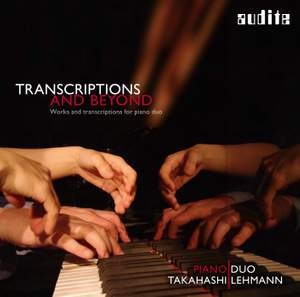The PianoDuo Takahashi / Lehmann once again manage to combine passionate expressivity, intellectual programme conception and virtuoso piano technique. In the works presented in this second volume, the lines between original and arrangement are blurred: art prevails over genre boundaries.
In the suspense between faithfulness to the original and interest in arrangements, Norie Takahashi and Björn Lehmann take their own position. The pianists perform original works or arrangements made or sanctioned by the composers themselves. Igor Stravinsky adapted the score of his 'Le Sacre du Printemps' for piano duet so that it could be played in rehearsals – creating a work with its very own sound character. His Concerto for Two Pianos, on the other hand, is an original composition, referring, however, to a long history of arrangements that adapted works for solo instruments and orchestra for keyboard instruments.
Conlon Nancarrow became famous for his works for player pianos. His 'Sonatina', in the version presented here, is a re-arrangement: originally conceived for piano (two hands), the composer – dissatisfied with the performance results – arranged it for player piano. Yvar Mikashoff adapted this version for piano duet – with brilliant results and much to the delight of the original composer. In his 'Hausmusik', Arnulf Herrmann turns the relationship between original and arrangement upside down. The colourful and rhythmically vivacious cycle opens with an adaptation of an ensemble piece, and closes with a composition which he later reworked into an ensemble piece. The PianoDuo Takahashi|Lehmann was founded in Berlin in 2009. The musicians perform in many European countries as well as in Korea and Japan. Norie Takahashi first came to prominence by winning awards at numerous competitions, including the International Beethoven Competitions in Bonn and Vienna, the Schubert Competition in Graz, the Leeds International Piano Competition and the Queen Elizabeth Competition in Brussels. Björn Lehmann studied in Hamburg, Lausanne and at the Universität der Künste Berlin with Klaus Hellwig. He also received important artistic inspiration from Ferenc Rados, Leonard Hokanson, Robert Levin, Zoltan Kocsis, members of the Amadeus Quartet, Hartmut Höll and Irwin Gage.



